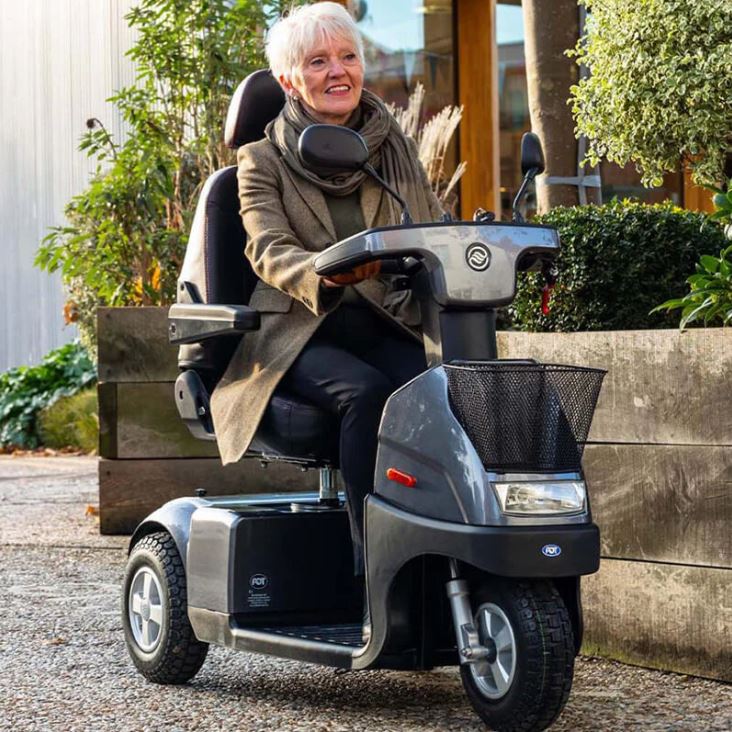Despite the use of a single catch-all term, there is a wide range of mobility scooters available to help ensure everyone has access to independence, with differences that go beyond form factor.
Whilst there is a design difference between a folding scooter that can easily fit in a boot, a powered wheelchair and a road-legal mobility scooter, there are far more differences between the types of mobility aids that can be used on the road and the ones that cannot.
What types of mobility scooters can be used on the road, and what rules do you need to follow when you do?
What Is Required With A Road Legal Scooter?
To be road-legal, a mobility scooter must be built according to Class 3 specifications, which means that it can be driven on the road up to a maximum speed of 8 mph.
You do not need a licence to drive one nor do you need number plates. You also do not need motor insurance, although it is very strongly suggested. It also must be registered with the DVLA like other vehicles, but they are not required to pay road tax.
You do need to have a physical disability or limited mobility to use one outside of testing, repair and demonstration purposes according to the DVLA, although you do not necessarily need to be registered as disabled in order to use a Class 3 scooter on the road.
You also need to be at least 14 years old to operate it on the road and should receive training on safe operation and which parts of the Highway Code you need to follow.
Your Class 3 scooter must have a speed indicator, lights, turning indicators, and horns like any other road-legal vehicle must, and the Highway Code is clear that lights must be used at night.
They also must have a maximum width of 0.85 metres, cannot weigh more than 150 kg (with an additional 50 kg allowance for medical equipment) and have an efficient braking system to avoid accidents.
If they are ever driven on dual carriageways, a flashing amber beacon must be fitted to warn motorists driving at speeds up to 70 mph that a slow-moving vehicle is on the road and they will drive safely to accommodate.
Can A Road Legal Scooter Be Used On The Pavement And Indoors?
A Class 3 mobility scooter can be used anywhere a Class 1 (unpowered wheelchair) or Class 2 mobility scooter can, although they must follow the same laws and regulations the latter do when operated.
The most pertinent rule, in this case, is the requirement that scooters not exceed the 4 mph speed limit for driving on the pavement for the safety of pedestrians and other pavement users.
This also means that mobility scooters can be used in shops, although because a Class 3 scooter is typically slightly larger than a Class 2, it can be slightly more difficult to use indoors, although most shops will be designed to accommodate this with wide aisles.





